House in Yagi containing an indoor courtyard by Suppose Design Office
An indoor courtyard with an earth floor and central tree is concealed behind the concrete walls of this bulky house in Hiroshima by Japanese studio Suppose Design Office (+ slideshow).
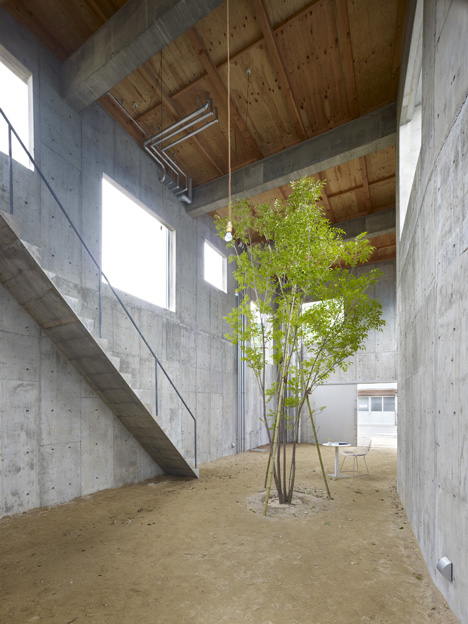
Located beside a canal, House in Yagi was designed by Suppose Design Office to deliberately look unfinished, so its concrete walls were left exposed both inside and outside.
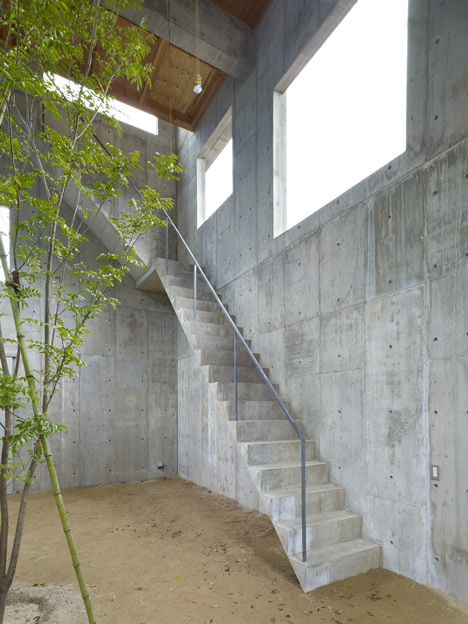
"Unlike other projects, the final stage of construction for this house was not aiming towards a finish stage, but to let the owner experience the sense of completion after living here," said the architects.
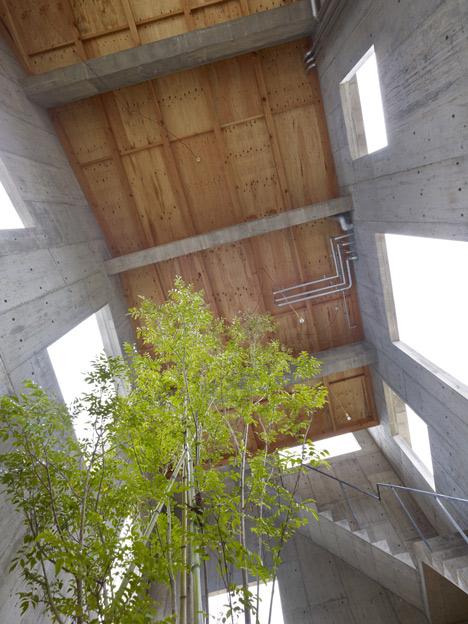
Living, dining and sleeping areas are all located in the uppermost section of the house, freeing up the ground floor to accommodate the double-height courtyard.
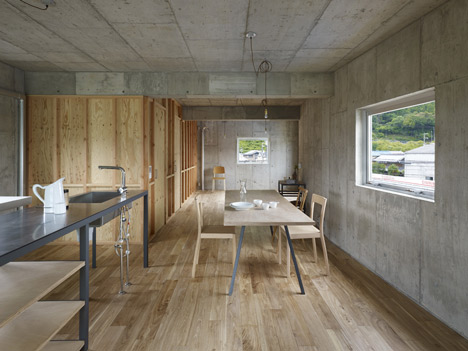
Square windows of different sizes surround this space, but were left without glazing to allow wind and rain to enter the building.
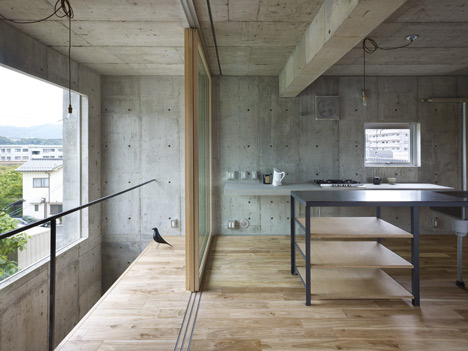
"All these elements are to enhance the experience of unlimited lifestyle that you may potentially have in this house, and minimise the boundary," added the architects.
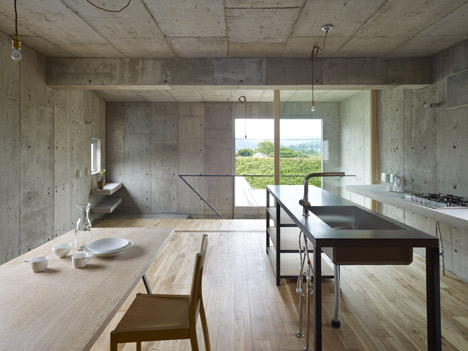
A concrete staircase folds around one corner, leading up to top-floor living spaces that include a combined dining room and kitchen, a bedroom that can be screened behind a partition, a bathroom and a general storage closet.
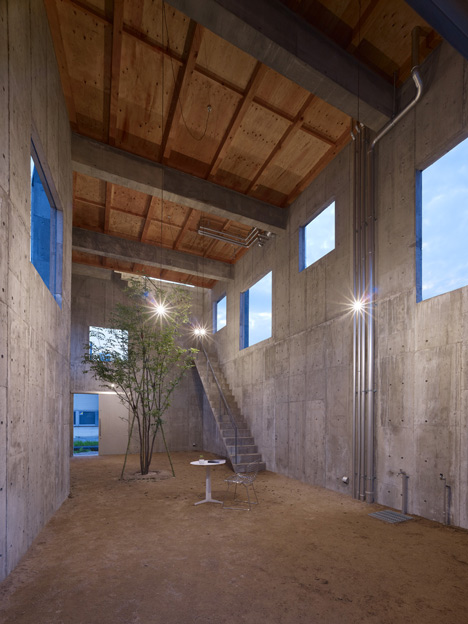
A narrow void in the floor plate creates a balcony looking down to the space below, but can be screened behind a folding glass door to prevent draughts.
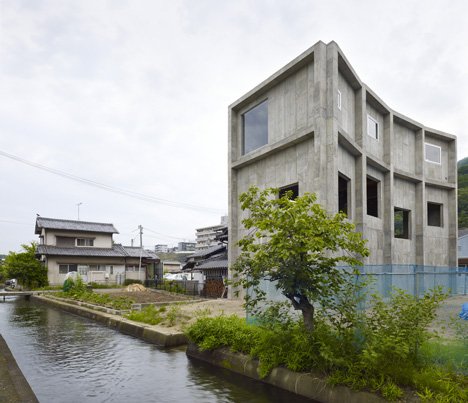
The house accommodates a growing family of four, so could be adapted in the future to add new rooms.
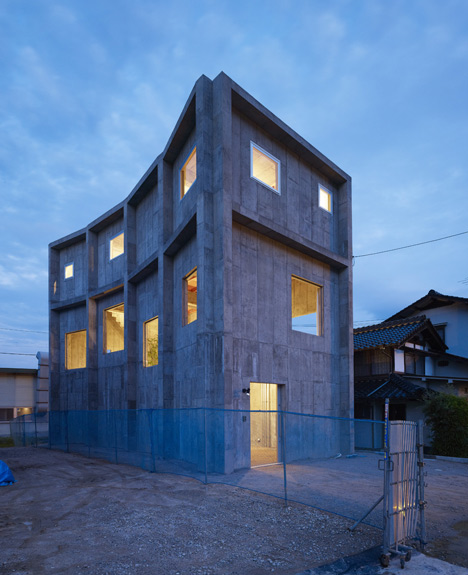
Suppose Design Office is led by architect Makoto Tanijiri. Past projects by the firm include House in Minamimachi, a residence with offset floors, and House in Kamiosuga, which features walls that only reach halfway down from the ceiling.
Photography is by Toshiyuki Yano.
Here's a project description from Suppose Design Office:
The House of Yagi
The House of Yagi is designed with the idea of an incomplete/complete form. Unlike other projects, the final stage of construction for this house was not aiming towards a finish stage, but to let the owner experience the sense of completion after living here.

Interior space of the house is designed to maximise the interaction to its surrounding environment. Ground floor material remained the same as the original site, with a single tree standing in the centre to present a natural contrast with the surrounding area. Windows of the 1st storey are kept open without any window shield or glass and creates an interesting interaction with wind and rain.
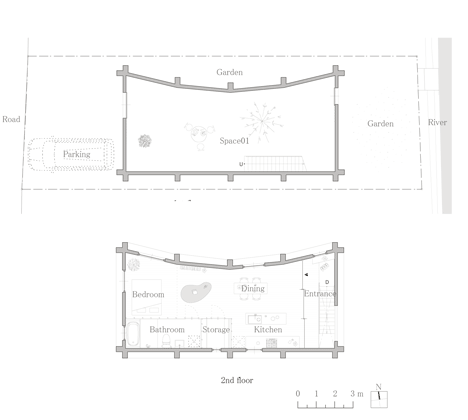
All these elements are to enhance the experience of unlimited lifestyle that you may potentially have in this house, and minimise the boundary. Through this different interpretation of connecting the exterior and interior space, new ways of living can be explored by the client.

Location: Hiroshima city, Japan
Principal use: personal house
Site area: 155.60 sqm
Building area: 56.24 sqm
Total floor area: 112.48 sqm
(1F: 56.24 sqm 2F: 56.24 sqm)
Completion: June 2012
Design period: April 2011 - January 2011
Construction period: February 2011 - June 2012
Structure: RC structure
Client: a couple and children
Project architect: Makoto Tanijiri [Suppose Design Office] + Ohno Hirohumi [Ohno JAPAN]
Lighting: Original
Products: dining table
Flooring: 1F - masa soil, 2F - elm flooring + WAX (mat)
Internal Wall: exposed concrete
Ceiling: exposed concrete
Construction: Shinkou Kensetsu